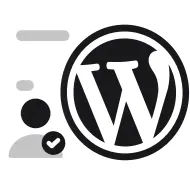Quick Summary:
- Migrate to WordPress if your website struggles.
- Fix messy code, slow performance, and scalability issues.
- Gain flexibility and better ongoing website management.
- Plan your migration for seamless growth and success.
Table of Contents
- Introduction
- Sign 1: Your Website Code Is Messy or Hard to Maintain
- Why messy code is a problem
- What this looks like in practice
- How WordPress helps
- Sign 2: Your Website Performance or SEO Is Suffering
- Why performance & SEO matter
- Symptoms to watch
- How WordPress can help
- Sign 3: You Can’t Scale or Handle Traffic Peaks
- What scalability means
- Signs of scalability issues
- WordPress as a scalable solution
- Sign 4: You Lack Flexibility or Your Team Is Inefficient
- Flexibility & team efficiency — why they matter
- What to look for
- WordPress for flexibility
- Migration: What to Do Next
- Step 1: Audit your current website
- Step 2: Choose your WordPress setup
- Step 3: Plan the migration
- Step 4: Execute the migration
- Step 5: Launch and monitor
- Why Qrolic Technologies Is the Right Partner for WordPress Migration
- Frequently Asked Questions (FAQ)
- Q1. Will my SEO rankings drop after migrating?
- Q2. How long will the migration take?
- Q3. Do I need to redesign the theme when migrating?
- Q4. What about cost?
- Conclusion
Introduction
In today’s fast-moving web environment, a website is more than a digital business card — it’s a strategic platform. If you feel your current website is holding your business back, isn’t scalable, or is difficult to maintain, then migrating to WordPress may be the best move. At Qrolic Technologies, we’ve worked with complex sites to move them to WordPress, improving performance, maintainability, and growth potential.
In this article we’ll explore five clear signs that it’s time to migrate to WordPress. We’ll walk you through what each sign really means, how to assess your situation, and the steps you can take.
Sign 1: Your Website Code Is Messy or Hard to Maintain
Why messy code is a problem
When a site’s codebase is outdated, lacks structure, or is heavily customised without clear documentation, then any change becomes risky. You might see:
- Frequent bugs when you try to add new features
- High development costs because every change needs deep investigation
- Long deployment times and fear of breaking something
What this looks like in practice
Maybe you inherited a site built many years ago; maybe there are multiple custom plugins, or the theme has been heavily modified so no one knows what will break if you update. This is a strong indicator that migrating to WordPress (with a clean, maintainable architecture) might pay off.
How WordPress helps
WordPress offers a standardised architecture (themes + child-themes, plugins, hooks) and a large developer ecosystem. With proper structure, you can reduce technical debt and future changes become easier and less risky.
Sign 2: Your Website Performance or SEO Is Suffering
Why performance & SEO matter
slow loading times, poor mobile experience, or Core Web Vitals issues not only frustrate users—they hurt search engine rankings. If your site is lagging, you’re leaving traffic (and revenue) on the table.
Symptoms to watch
- Pages of your site take too long (> 3–4 seconds) to load
- Mobile user experience is poor (e.g., bounce rate high on mobile)
- You’ve tried performance fixes but improvements are limited
- Your SEO drops or you’re not ranking for keywords you expect
How WordPress can help
With the right hosting, caching (object-cache, page-cache), lightweight theme/framework and SEO plugin (for example, you’re using Rank Math already), WordPress can deliver excellent performance and scalability. For example, the official WordPress.com migration page shows the benefits of moving to WordPress hosting with high uptime and global CDN.
Sign 3: You Can’t Scale or Handle Traffic Peaks
What scalability means
Your business might be growing: more users, more content, more complex features, seasonal traffic spikes (campaigns, events). If your site crashes, slows, or fails during peak loads, that’s a red flag.
Signs of scalability issues
- Your site slows down or times out when traffic increases
- Your current hosting plan or CMS can’t handle growth
- You’re adding new features (e-commerce, membership, forums) but the platform doesn’t support them easily
- You fear peak-hour traffic and don’t have assurance your website will hold
WordPress as a scalable solution
WordPress can handle high traffic if appropriately set up: good hosting (managed WordPress, CDN), caching layers, optimized database, efficient theme/plugins. This is especially relevant for high-traffic websites or content publishing. At Qrolic Technologies we specialise in “High Traffic Websites” and “Complex Websites” migration and optimization.
Sign 4: You Lack Flexibility or Your Team Is Inefficient
Flexibility & team efficiency — why they matter
Growing websites need to adapt: change design, add functionality, integrate marketing tools, create new pages quickly. If your current platform locks you in, or changes take too long, you’re incurring opportunity cost.
What to look for
- Your team (or agency) takes long to implement changes
- Plugins or modules are hard to integrate or customise
- Your CMS doesn’t allow you to experiment (landing pages, A/B tests, new layouts)
- You feel limited in design or feature innovation
WordPress for flexibility
WordPress has a rich ecosystem—thousands of themes and plugins, page builders, REST API integrations, custom post types. This allows teams to build, test, and deploy faster. You can also switch themes, customise templates, add functionalities with minimal risk.
Migration: What to Do Next
If you recognise one or more of these five signs, here is a step-by-step approach to migrating to WordPress.
Step 1: Audit your current website
- Content inventory: what pages, posts, custom post types you have
- Technical audit: theme, plugins, performance, hosting environment
- SEO audit: URL structure, redirects, sitemap, backlinks
Step 2: Choose your WordPress setup
- Host: managed WordPress hosting or self-hosted with strong specs
- Theme/Framework: choose an efficient and well-supported theme
- Plugins: install only what’s needed, avoid redundant functionality
- SEO: ensure proper sitemap, URL structure, and metadata (since your existing site uses Rank Math)
Step 3: Plan the migration
- Backup everything (files + database)
- Ensure destination WordPress version is latest and matches PHP version etc. (see GoDaddy’s migration guidance)
- Decide what to migrate (content, images, media, redirects, users, comments)
- Map old URLs to new URLs or ensure they remain the same to preserve SEO
Step 4: Execute the migration
- Use plugin or manual process depending on complexity
- Test thoroughly in a staging environment
- After migration: test links, images, site speed, mobile responsiveness, SEO metadata
Step 5: Launch and monitor
- Set the site live and ensure DNS/time propagation done correctly
- Monitor site performance, user behaviour, Core Web Vitals
- Keep backups and monitoring in place
Why Qrolic Technologies Is the Right Partner for WordPress Migration
At Qrolic Technologies we specialise in helping businesses migrate, optimise, and manage WordPress websites. We know that moving to WordPress is not just about switching platform — it’s about setting up a foundation for growth. Our process emphasises:
- Understanding your unique needs and goals
- Precise implementation, testing and deployment
- Keeping you informed every step of the way
- Long-term relationships and ongoing support
For more details on what we do, check our service pages on High Traffic Websites and Complex Websites. (Note: internal links should point to real pages, update accordingly)
Frequently Asked Questions (FAQ)
Q1. Will my SEO rankings drop after migrating?
If done properly — preserving URL structure, implementing correct redirects, keeping metadata, and ensuring a smooth launch — the risk of ranking drop is low. Proper planning is key.
Q2. How long will the migration take?
It depends on the size and complexity of your website (number of pages/posts, custom components, e-commerce, etc.). Some migrations take days, others weeks. Using reliable tools and specialists speeds things up. For example, the plugin “Migrate to WordPress.com” boasts fast transfers.
Q3. Do I need to redesign the theme when migrating?
Not necessarily. You can migrate using your existing design, but many businesses take the opportunity to refresh the UI/UX, improve mobile experience, and upgrade performance.
Q4. What about cost?
Costs vary. You’ll need to consider hosting, theme/licensing, developer time for migration and testing, plus ongoing maintenance. But when weighed against the cost of slow site, lost leads, and high maintenance, migration often pays for itself.
Conclusion
If you recognise one or more of the signs below, it’s time to seriously consider migrating to WordPress:
- Your website code is chaotic or difficult to work with.
- Performance, SEO or user experience are suffering.
- You cannot scale or handle traffic peaks.
- You lack flexibility and your team is inefficient.
Migrating to WordPress offers flexibility, scalability, a massive ecosystem of tools and plugins, and under the right structure, easier long-term maintenance and growth.
If you’re ready to take the next step, reach out to Qrolic Technologies. Together we’ll audit your current site, plan the migration, execute accurately, and support you for the long term.
Let the website stop holding you back — and become the growth engine your business deserves.






